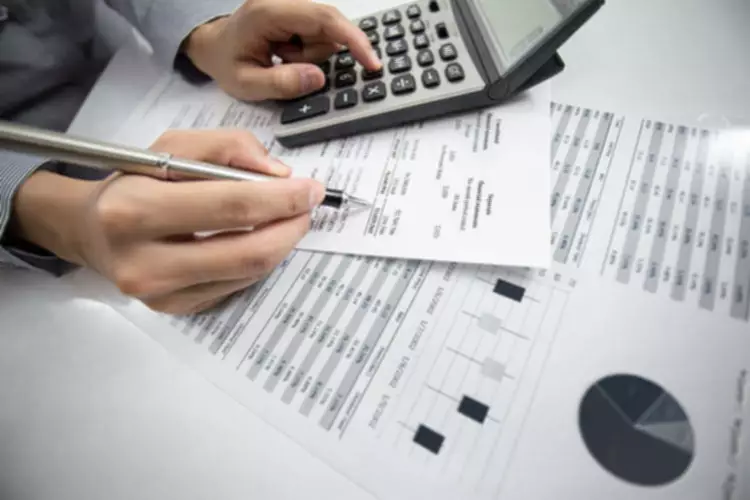Content

Discover the products that 32,000+ customers depend on to fuel their growth. For example, high-end goods tend to have low inventory turnovers. A farmer doesn’t need to purchase a new tractor annually, and most people aren’t scooping up designer jewelry on a whim. Material requirements planning, or MRP, is a related process to understand inventory requirements while balancing supply and demand. When a manufacturer dictates the minimum, or maximum, amount you may sell an item for, that limits your ability to use price as an inventory lever. Average inventory is typically used to even out spikes and dips from outlier changes represented in one segment of time, such as a day or month. Average inventory thus renders a more stable and reliable measure.
One isn’t better than the other, but be sure you are consistent with your comparisons. You don’t want to use annual sales to find the ratio for one company while using the cost of goods sold for another.
What Are Key Duties Expected of an Inventory Manager Job?
It takes into account the beginning inventory balance at the start of the fiscal year plus the ending inventory balance of the same year. Companies will almost always aspire to have a high inventory turnover. After all, high inventory turnover reduces the amount of capital that they have tied up in their inventory. It also helps increase profitability by increasing revenue relative to fixed costs such as store leases, as well as the cost of labor. In some cases, however, high inventory turnover can be a sign of inadequate inventory that is costing the company sales.
- Say, in the dreadful 2020, your average inventory value was $100,000, calculated from the average of your opening and closing stock.
- Low inventory turnover ratio is a cause for concern, as it would indicate that demand for your products has declined.
- Smart inventory and demand planning capabilities is a great way to reduce the risk of ending up with dead stock that you can’t shift.
- For instance, a company might purchase a large quantity of merchandise January 1 and sell that for the rest of the year.
- In effect, a mismatch is created between the numerator and denominator in terms of the time period covered.
The inventory turnover ratios for each of your products can help you determine how marketable your goods are and how effective your marketing is. Depending on the industry that the company operates in, inventory can help determine its liquidity. For example, inventory is one of the biggest assets that retailers report. If a retail company reports a low inventory turnover ratio, the inventory may be obsolete for the company, resulting in lost sales and additional holding costs. Inventory turnover measures how efficiently a company uses its inventory by dividing its cost of sales, or cost of goods sold , by the average value of its inventory for the same period.
Analysis
Here, $ 200,000 is the revenue generated from the operations of selling the phones. Here, $ 220,000 is the revenue generated from the operations of selling the phones. Additionally, keep a close eye on old stock and implement a firm first-in-first-out sale strategy.
What is Inventory Turnover Ratio? Learn More – Investment U
What is Inventory Turnover Ratio? Learn More.
Posted: Mon, 22 Nov 2021 08:00:00 GMT [source]
To find the inventory turnover ratio, we divide $47,000 by $16,000. Keeping an eye on this ratio is essential because if your company’s inventory takes a long time to proceed, you are tying up too much money and inventory stock in unsold products. The inventory turnover ratio is a simple but effective tool for measuring your business performance. It’s also an excellent indicator for determining whether you’re operating at peak efficiency.
How do I decrease my inventory turnover rate?
If your inventory turnover is low, your stock might be spending too much time sitting on your shelves, not being sold. Inventory turnover is a measure of how efficiently a company can control its merchandise, so it is important to have a high turn. This shows the company does not overspend by buying too much inventory and wastes resources by storing non-salable inventory. It also shows that the company can effectively sell the inventory it buys. What do you have in your store that already gets a lot of hype and has a high turnover rate? Maybe you should find similar products to offer your customers.
The purchasing manager may advocate purchasing in bulk to obtain volume purchase discounts. Doing so can substantially increase the investment in inventory. Types Of InventoryDirect material inventory, work in progress inventory, and finished goods inventory are the three types of inventories. The raw material is direct material inventory, work in progress inventory is partially completed inventory, and finished goods inventory is stock that has completed all stages of production. Average InventoryAverage Inventory is the mean of opening and closing inventory of a particular period.
Definition of Inventory Turnover Ratio
An inventory turnover ratio that is too low or too high indicates ineffective inventorying. Low inventory turnover proves your stock is not moving as fast you would like, and your business is losing money because of having to hold inventory for longer than necessary. This lost revenue can be in the form of excess labor, storage facilities, or insurance charges. https://www.bookstime.com/ Moreover, you may have to discount or discard products that are nearing expiry. An average inventory turn formula has two elements – current inventory and sales. So, the first step to calculating the ratio is determining your average inventory and the cost of goods you have sold over a particular period of interest, such as fiscal year, quarter, or month.

Hence, for 2013, the average inventory will be 2012 and 2013, and for 2014, it will be an average of 2013 and 2014. Then, in the second step, we can divide sales by average inventory. The inventory turnover ratio is used to assess if the stock is excessive compared to the sales. So, to lower your stocks and improve your cash flow, you need good inventory management. Cost of goods sold is the direct production cost and can be found on the company income statement.
Over-ordering or producing larger batches of a product than you can sell is a common culprit of a low inventory turnover ratio. As an example, let’s say that a business reported the cost of goods sold on its income statement as $1.5 million. It began the year with $250,000 in inventory and ended the year with $750,000 in inventory. A high inventory turnover ratio typically means your business is managing stock efficiently. This inventory turnover ratio formula information is useful to shareholders and business analysts, because the turnover ratio indicates the company’s ability to sell its products. Inventory is any store’s greatest asset and is often put up as collateral for loans, so creditors and banks are also very interested in knowing how easily the goods can be sold. That said, low turnover ratios suggest lackluster demand from customers and the build-up of excess inventory.